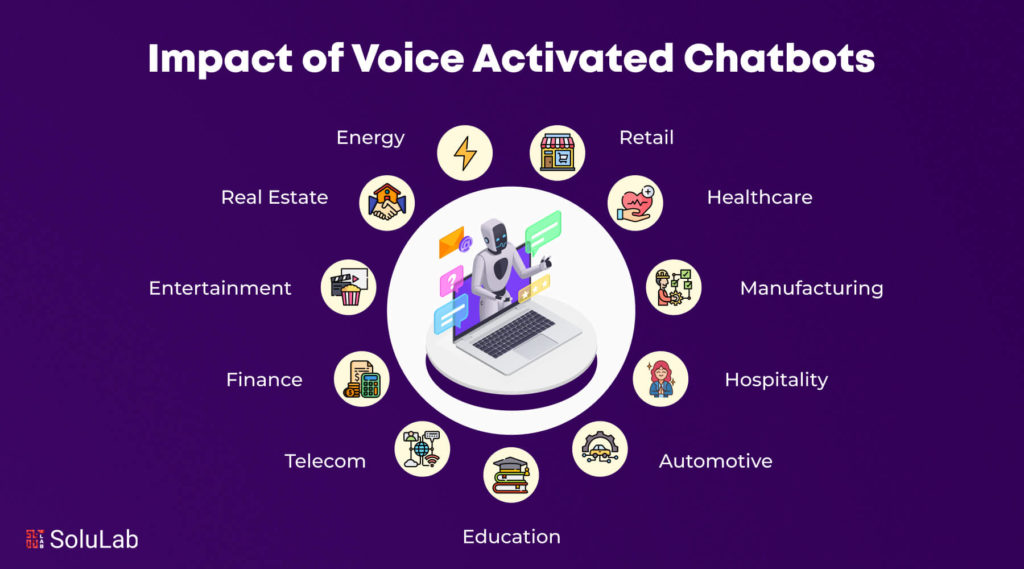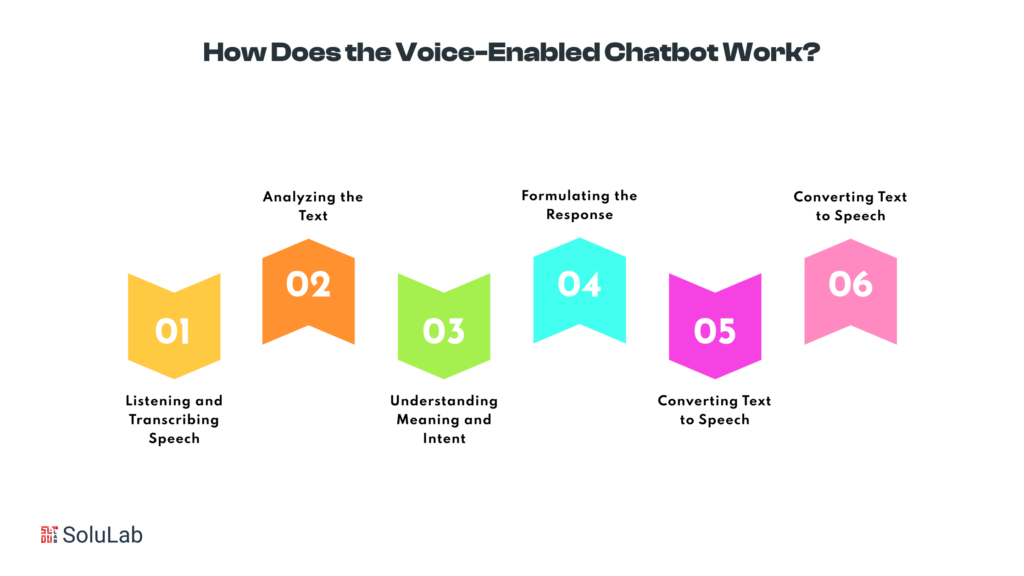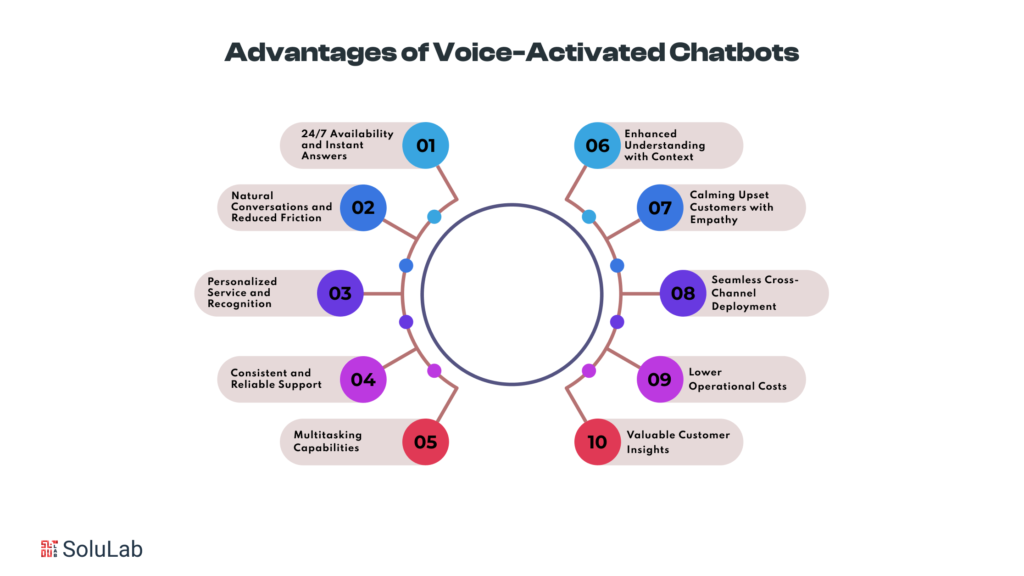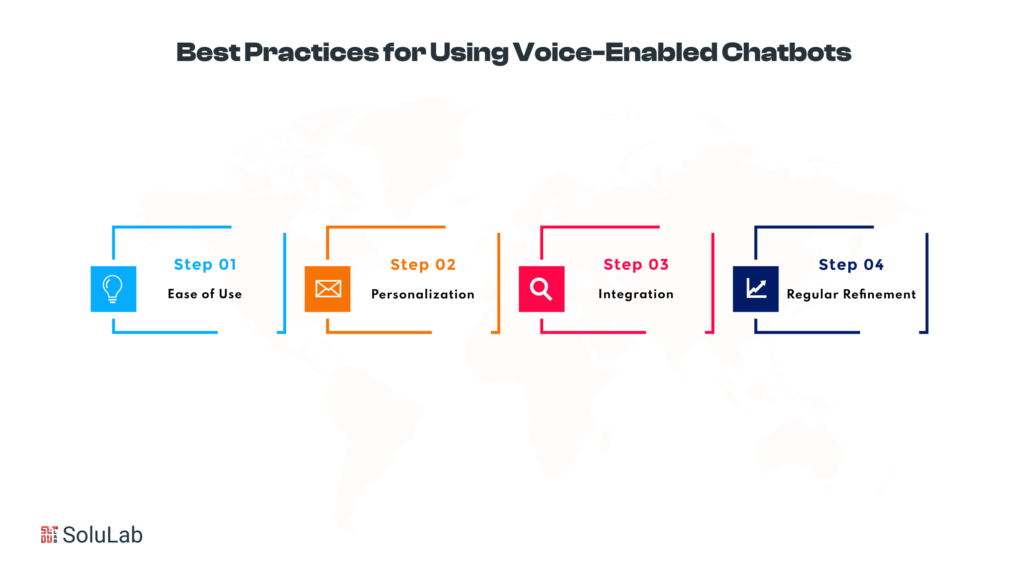
Voice AI is rapidly changing the future of customer service and support. An increasing number of companies are integrating conversational AI and voice-activated chatbots into their customer experience strategy. This technology enables brands to provide fast, personalized, and effortless service across various channels. Users can speak naturally and receive quick resolutions to inquiries without waiting on hold or navigating complex phone menus.
As voice-enabled chatbots continue to advance, they will facilitate even more intuitive and human-like interactions between customers and businesses. Companies that embrace these voice-based solutions early will have a competitive advantage in delivering exceptional experiences that keep users satisfied and loyal. This guide highlights how voice chatbots are helping businesses improve their customer experience and provide better services.
The Evolution of Voice AI: From Early Beginnings to Mainstream Adoption
While voice AI assistants like Siri and Alexa have become wildly popular in recent years, the origins of voice technology stretch back decades. In 1952, Bell Labs developed the first speech recognition machine called Audrey, which could understand spoken numbers. IBM introduced Shoebox in 1961, the first digital speech recognition tool that could comprehend 16 words and 9 digits.
In the 1960s, MIT professor Joseph Weizenbaum created ELIZA, the first conversational chatbot. Though rudimentary, ELIZA demonstrated the potential for computers to engage in dialogue.
Gradual innovations in voice and speech processing continued over the next few decades. Then, in 2010, the modern era of voice AI emerged when Apple unveiled Siri. This intelligent assistant that uses natural language marked a major milestone in mainstream voice technology.
Other tech giants soon followed with their voice AI rollouts, like Google Now in 2012 and Microsoft Cortana in 2014. The same year, Amazon launched Alexa and its Echo devices, firmly cementing voice assistants as a consumer technology.
Today, the voice-activated chatbot is a rapidly accelerating field. Major companies and startups are investing heavily in speech recognition, voice bots, and other voice-powered AI innovations. As the technology continues improving, voice looks set to become a dominant mode of human-computer interaction.
Voice-Activated Chatbot: A Brief Introduction
A voice-activated chatbot is a type of conversational AI that allows businesses to have natural, voice-based conversations with their customers. Voice chatbots, also called voice assistants or voice agents, use speech recognition technology to interpret spoken language. They contain complex natural language processing systems that analyze requests and questions posed in natural speech.
Voice chatbots can understand context and intent, much like a human. They provide relevant voice responses in natural language, creating seamless and intuitive human-computer interactions. Voice chat bots allow people to get information, complete tasks, and solve issues by simply talking out loud, as they would to another person.
With more consumers using voice to interact with smart devices, chatbots voice make it easy for them to get real-time support. No need for awkward typing on a small screen. Users can ask questions about products, understand specifications, and address order issues just by speaking. Chatbot Voice offer convenience and instant answers 24/7.
Voice chatbots differ from the voice assistants we use in our everyday lives, like Siri or Alexa. Though both leverage natural language processing, their capabilities diverge:
- Voice assistants control smart home devices, exist on hardware like smart speakers, and act as an interface for apps and services.
- Voice chatbots specifically empower customer service. They suggest relevant products, explain specifications, handle orders, and resolve issues for customers speaking naturally.
While voice assistants are useful for personal tasks, voice chatbots enable businesses to deliver the hands-free, personalized, on-demand service that consumers increasingly expect. Adopting chatbot voice technology can give companies a competitive advantage in their industry.
How Does the Voice-Enabled Chatbot Work?

Voice-powered AI chatbots feel almost magical in their ability to have natural conversations. But how does this technology work behind the scenes? Here’s a simplified step-by-step explanation:
-
Listening and Transcribing Speech
First, the chatbot uses automated speech recognition (ASR) to listen to the user’s spoken question and transcribe it into text. Advanced ASR can understand different languages, accents, and filter out background noise.
-
Analyzing the Text
The chatbot breaks down the text into smaller pieces to analyze. This simpler data goes through multiple processing cycles, including using neural networks that mimic human neurological processing.
-
Understanding Meaning and Intent
Leveraging natural language processing/understanding (NLP/NLU), the chatbot interprets the true meaning and intent behind the text based on context. The NLU keeps learning over many conversations.
-
Formulating the Response
Given the full understanding of the user’s question, the voice-enabled chatbot determines the optimal response by choosing from pre-programmed options. It picks the reply that most precisely answers the user.
-
Converting Text to Speech
Finally, the text response is synthesized into natural-sounding speech. The text-to-speech engine can be customized to mirror human voices and dialects.
-
Continuing the Conversation
The chatbot voice stores the conversation history to keep chats smooth and coherent across multiple interactions.
Advantages of Voice-Activated Chatbots

-
24/7 Availability and Instant Answers
Unlike human agents who go offline, voice-enabled chatbots can provide continuous around-the-clock customer service. Customers never have to wait for the next business day to have their questions answered. The chatbots are always ready to immediately respond to inquiries, eliminating hold times. This brings immense convenience, allowing customers to get their issues resolved on-demand rather than having to schedule calls during constrained service hours.
-
Natural Conversations and Reduced Friction
Voice chatbots enable free-flowing, natural dialogue using speech recognition and natural language processing. Customers can speak conversationally as they would with a live service agent, using their vocabulary and asking questions in their own words. No more having to tediously navigate through phone menu options or type inquiries on small smartphone screens. Voice eliminates friction, facilitating interactions that feel seamless and human-like.
-
Personalized Service and Recognition
With access to individual customer data, voice chatbots can provide tailored recommendations and remember personal preferences. For example, the chatbot may reference past purchases and suggest relevant items the customer may like. Or if a repeat customer asks about order status, the bot can pull up their information and provide updates specific to their previous orders. This personalization makes customers feel truly recognized and understood.
-
Consistent and Reliable Support
Unlike human reps who have off-days or may provide inconsistent service, chatbot voice deliver standardized responses and maintain optimal service levels consistently. There is no deviation in the virtual agent’s ability to support customers. The same highly reliable system interacts with every caller, eliminating the variation that humans inevitably introduce. Customers can trust consistent quality.
-
Multitasking Capabilities
While human reps can realistically only handle a handful of customers at once, voice chatbots can juggle hundreds or even thousands of inquiries simultaneously. Using sophisticated parallel processing, the bots avoid bottlenecks even when customer demand spikes during peak periods. There is infinite scalability built into the technology. This ensures speedy responses and prevents frustration.
-
Enhanced Understanding with Context
Cutting-edge natural language processing applications allows voice chatbots to deeply comprehend customer questions based on full contextual understanding, sentiment analysis, and intent recognition. Instead of simply detecting keywords, the bot understands the customer’s complete meaning and responds accordingly. This minimizes misunderstandings that lead to poor experiences and the need for customers to repeat themselves.
-
Calming Upset Customers with Empathy
In instances when customers are frustrated, voice-activated chatbots can apply emotional intelligence to first detect that the person is upset based on tone analysis. The bot can then use carefully crafted dialogue to calm the customer and turn the interaction positive. For example, it may apologize for the frustration and offer to help find a resolution. This empathy establishes trust and defuses tense situations.
-
Seamless Cross-Channel Deployment
Companies can deploy conversational voice AI across service channels like phones, website chat, mobile apps, and smart speakers for a unified customer experience. Customers may start an inquiry by phone and then continue seamlessly via chatbot on their mobile browser. The integrated platform prevents having to repeat information across channels.
-
Lower Operational Costs
By automating key customer service tasks like order status, account updates, product Q&A, etc., voice chatbots significantly reduce the volume of inquiries handled by human agents. This decreases staffing requirements and overhead costs. The infinitely scalable bots offer efficient automation that contains costs.
-
Valuable Customer Insights
Every customer interaction with a voice chatbot generates extremely useful data and insights. Analytics dashboards can track metrics like conversation topics, resolved vs. unresolved questions, common pain points, product perceptions, and more. Companies gain an unprecedented window into the customer perspective, enabling them to rapidly refine products, services, and marketing based on actionable voice-derived intelligence.
Voice-Enabled Chatbot Trends and Predictions
Voice-based chatbots have come a long way in recent years thanks to advancements in artificial intelligence. While early voice bots were rigid and limited, today’s voice AI leverages large datasets and natural language processing to deliver seamless, natural conversations. As the technology continues maturing, several key trends are driving increased adoption:
-
Voice AI is becoming more advanced and human-like
With continuous training on new interactions, voice chatbots are getting better at processing natural speech in all its complexity. They provide responses that sound less robotic and more conversational. This boosts user comfort levels and satisfaction.
-
Growing consumer awareness and demand
As smart speakers and voice assistants like Alexa become ubiquitous, customers increasingly expect hands-free, voice-based engagement from brands. Voice AI provides speedier responses, better insights, and lowered costs. Adoption is especially high among millennials, with 35.8% using voice assistants monthly.
-
Integration with the Internet of Things
Voice chatbots provide a hands-free interface for the influx of connected devices. As Internet of Things (IoT) explodes in regions like India and Latin America, conversational AI gives users intuitive control. The global number of IoT devices is predicted to more than triple from 2020 to 2030.
-
Enhanced security and privacy
Data protection is now a priority for voice AI. Advanced systems can identify individual voices and secure personal information. This reassures users wary of sharing private details. Studies show AI security can reduce breach costs by over 50%.
With compelling benefits across industries, voice chatbots are poised to become a preferred customer engagement channel. Companies that leverage conversational AI early will gain a competitive edge. The future of customer experience is talking back.
How to Come Up With Your Voice-Enabled Chatbot?
Implementing voice-enabled chatbots presents exciting opportunities for companies to transform customer engagement. However, careful planning and strategic decisions are crucial for creating truly effective voice assistants. Follow these tips to design voice bots that feel natural, resolve pain points, and strengthen brand relationships.
-
Start with a Clear Voice Strategy
Don’t jump into voice without clear goals. Determine what you want your voice chatbot to achieve. Is it boosting operational efficiency through automated processes? Providing a more intimate customer connection? Or establishing your brand as an industry leader in cutting-edge technology? Outline the objectives, then engineer your voice assistant accordingly. A strategic focus grounds the entire project.
-
Pinpoint Customer Experience Gaps
Voice excels at resolving specific frustrations in the customer journey. Conduct thorough research to uncover where your customer experience falters. Analyze typical touchpoints like modifying orders, checking status, and changing preferences. Identify pain points where a conversational voice bot could simplify complex processes through intuitive voice commands. Alleviating these problems should be a top priority.
-
Define Your Voice Bot’s Personality
Unlike text chatbots, voice assistants can showcase unique personalities through tone, language, conversation flow, and more. Decide what attitude your voice bot should convey. Is it serious and professional or casual and entertaining? Should it anticipate user needs or only respond when prompted? Factor personality into elements like voice, diction, greeting style, and how it handles casual chat. Strive for natural conversations that delight users.
-
Choose the Right Platform
A capable platform is fundamental to voice chatbot success. Ensure omni-channel compatibility, allowing voice deployment across various touchpoints. The ability to build on existing infrastructure is ideal, either augmenting current chatbots or providing an integrated solution. Powerful tools to optimize complex conversational flows are a must, along with easy visual design. Look for robust AI that enhances understanding and learning. Solid natural language processing will interpret users’ diverse phrasing. APIs should allow seamless integration with backend systems. An excellent platform gets both voice capabilities and overall chatbot mechanics right.
Use Of Voice Enabled Chatbots Across Industries
Voice-enabled chatbot is transforming a diverse range of industries by reinventing customer engagement, streamlining operations, and enabling innovation. Here are some of the key ways various sectors are leveraging the technology:
1. Retail – Voice Chat Bots provide 24/7 support for online shopping, from personalized recommendations to purchase assistance. Conversational AI boosts sales through interactive experiences.
Related: AI in Real Estate
2. Healthcare – Virtual health assistants automate appointment scheduling, answer patient questions, and send medication reminders. This technology enhances care and reduces staff workloads.
3. Finance – Voice-enabled chatbots help with account management, offer financial tips, and enable voice-activated banking for added security. Conversational AI delivers customized service.
4. Hospitality – Hotel and travel brands use Voice AI to facilitate booking, provide tourist recommendations, and act as interactive concierges to create exceptional stays.
5. Automotive – Voice assistants enable hands-free control over navigation, entertainment, and vehicle diagnostics. They boost safety and convenience for drivers.
6. Education – AI in Education assist students with course selection, homework help, and individualized learning. Admin tasks are automated to improve teacher and student interactions.
7. Telecom – Customers can troubleshoot network issues, manage accounts, and explore new services through conversational agents. Call volumes are reduced.
8. Manufacturing – Intelligent chatbots monitor equipment, predict maintenance needs, and alert workers to potential problems. Efficiency and uptime are increased.
9. Entertainment – Interactive AI provides personalized recommendations for content and gaming. It transforms user experiences across media platforms.
10. Real Estate – Chatbots generate leads by answering property questions and scheduling site visits for buyers and renters.
11. Energy – Customers can check bills, report outages, and receive conservation tips from virtual agents, enhancing satisfaction.
Best Practices for Using Voice-Enabled Chatbots

-
Ease of Use
For improved customer acquisition using chatbots, ensure they are easy to use and offer a seamless experience. This involves designing the chatbot with customers in mind and providing a simple, user-friendly interface.
-
Personalization
Tailor the chatbot to individual customer needs and preferences. This personal touch helps build stronger relationships and enhances the overall customer experience.
-
Integration
It’s crucial to connect chatbots with other customer service channels, such as email and phone support, to ensure customers can receive support through their preferred channel.
-
Regular Refinement
Regularly review and enhance the chatbot to keep up with changing customer needs. This may involve updating training data, adding new features, or adjusting the user interface.
Future Of Voice Chatbots In Customer Acquisition
The future of utilizing chatbots for customer acquisition looks promising, as new advancements in artificial intelligence open up creative opportunities for highly personalized and seamless customer experiences.
One of the benefits of voice chatbots is customer support and service. With sophisticated natural language processing, chatbots will become increasingly adept at understanding the context and nuances in customer questions and requests. This will enable them to provide customized and effective solutions, building trust and loyalty more efficiently than traditional support channels.
Additionally, as chatbots gain predictive capabilities through machine learning, they will transition to proactive customer service models. By analyzing previous interactions and purchase history, chatbots will gain the ability to anticipate individual customer needs and provide recommendations or solutions preemptively. This has the potential to delight customers and make them feel truly understood.
Chatbots also present new opportunities for lead generation and sales. They can be used to qualify leads through conversational questionnaires and recommend products based on interactive assessments of customer preferences. Their ability to engage customers in natural two-way dialogue makes the discovery and purchase process interactive and meaningful.
Takeaway
Voice-activated chatbots represent an incredible advancement that is transforming customer service and interactions. With the ability to have natural, real-time conversations, voice chatbots allow businesses to provide instant support and resolutions around the clock. Customers appreciate the ease and convenience of speaking plainly to resolve issues, without having to navigate phone menus or type inquiries.
As speech recognition, neural processing, and natural language capabilities continue advancing, voice chatbots will become even more seamless and lifelike. Their adoption across industries is rapidly accelerating. Companies that leverage conversational voice AI will gain a distinct competitive advantage through superior customer experiences. Chatbot Voice are the future of customer engagement.
Looking to boost customer experience? SoluLab’s conversational AI developers can build a customized voice-enabled chatbot perfectly suited for your business needs. With natural language processing, seamless voice-to-text transcription, and machine learning capabilities, your SoluLabs chatbot development company will engage customers through natural dialogue, understand requests, and provide quick resolutions 24/7.
The future of customer service is conversational AI, and with SoluLab’s expertise, you can bring efficient, personalized voice assistance to your customers. Get in touch now!
FAQs
1. Is a voice chatbot and a voicebot the same?
Yes, a voice chatbot and a voicebot refer to the same type of conversational AI tool. Both terms describe an AI-powered program that can understand speech and respond via voice. The names can be used interchangeably.
2. Do customers like voice chatbots?
Surveys show that over 70% of consumers are receptive to voice chatbots, especially after the pandemic increased demand for contactless service. Voice AI delivers the quick, convenient support that today’s customers expect. However, the voice experience must be seamless, natural, and accurate to drive satisfaction. Advanced natural language capabilities are key.
3. Does voice chatbots increase sales?
Yes, well-designed voice chatbots can effectively generate leads and sales. By understanding visitor questions and product needs and then responding with relevant information, voice bots encourage contacts to convert into high-quality leads. Their conversational nature promotes engagement.
4. How are voice-enabled chatbots advancing?
Key areas of innovation are making voice interactions more human-like. Voice AI is getting better at interpreting nuances like slang, emotions, and multi-step conversations. It is also becoming capable of more sophistication like context switching between topics and understanding humor. With generative AI, voice bots can even create original, relevant content on the fly.
5. Should voice AI replace human agents?
The most effective model combines voice AI for common inquiries with human oversight for complex issues. Together, they deliver optimal efficiency and quality. Voice bots handle high-volume routine questions, freeing staff to focus on relationship-building and nuanced cases. However, ongoing human training improves the voice AI’s capabilities.
6. Is voice AI accessible to all users?
Inclusivity is a priority as voice AI expands. Chatbots are being optimized for understanding diversity in languages, accents, speech patterns, and vocabularies. Features like real-time translation enable multi-language support. Voice AI is also being integrated with screen readers and sign language tools to serve blind and deaf users.
7. How does voice AI protect user privacy?
Responsible companies prioritize privacy protections in voice AI. Data security features include user authentication via voice biometrics and encryption of stored conversations. Voice chatbots only access the minimum user data necessary. Transparency policies clearly explain how data is managed. These measures build ethical, trustworthy voice systems.






